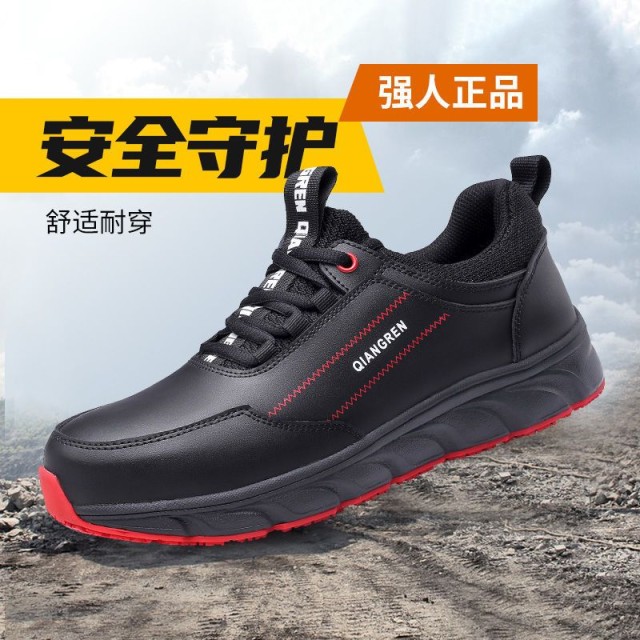For workers in hazardous environments, the right footwear must strike a delicate balance: robust protection against workplace dangers and ergonomic comfort for extended wear. Composite toe boots have emerged as a game-changer, blending advanced material science with anatomical design to keep feet safe and comfortable through long shifts. Here’s how they do it—and how to choose the best pair for your needs.
Comfort Meets Safety: The Science Behind Composite Toe Boots
1. Lightweight Composite Materials vs. Traditional Steel
Composite toes, crafted from carbon fiber, Kevlar, or high-strength plastics, weigh significantly less than steel—often reducing boot weight by 30–50%. This lightness minimizes leg fatigue during repetitive motion or prolonged standing, a critical advantage for:
- Electricians and utility workers: Non-conductive materials prevent electrical hazards.
- Airport or security personnel: No metal means no interference with detectors.
- Cold-weather workers: Better insulation than steel, which can conduct chill.
Research shows that lighter footwear reduces energy expenditure by up to 15% during physical tasks, directly impacting endurance.
2. Anatomical Design for Pressure Distribution
Unlike rigid steel toes, composite materials can be molded to match the foot’s natural curvature. Key ergonomic features include:
- Tapered toe boxes: Reduce friction on the pinky toe and bunions.
- Gradual flex points: Align with foot joints to prevent stiffness.
- Contoured midsoles: Distribute weight evenly, alleviating arch strain.
Pro tip: Bend the boot gently at the ball of the foot—it should flex without resistance, mimicking barefoot movement.
3. Advanced Cushioning Technologies for Impact Absorption
Modern composite toe boots integrate layered cushioning systems:
- Dual-density midsoles: Firmer support under the arch, softer foam at the heel.
- Shock-absorbing heels: Reduce joint impact when walking on hard surfaces.
- Memory foam collars: Cradle the ankle to prevent rubbing.
Case in point: Workers in manufacturing plants report 20% fewer foot complaints after switching to boots with these features.
Durability Without Sacrifice: Real-World Applications
1. Case Study: 12-Hour Shifts in Manufacturing
A Midwest auto plant tested composite toe boots against traditional steel toes over six months. Results revealed:
- Fewer fatigue-related incidents: Workers completed shifts with less discomfort.
- No compromise on safety: All boots met ASTM F2413-18 standards for impact protection.
2. Moisture-Wicking Liners and Temperature Regulation
Composite materials inherently resist heat transfer, but premium boots add:
- Breathable mesh liners: Wick sweat to prevent blisters.
- Insulated options: Retain warmth in freezers without added bulk.
Did you know? Moisture buildup is a leading cause of foot fatigue; proper ventilation can extend comfortable wear by hours.
Choosing the Right Fit: Beyond Shoe Size
1. How to Test Boot Flexibility and Arch Support
- Twist test: Grab the toe and heel; the boot should twist slightly (indicating flexibility) but snap back to shape (showing support).
- Stair test: Walk upstairs—if your heel lifts excessively, the arch support is inadequate.
2. Industry Certifications That Guarantee Comfort Standards
Look for these ASTM labels:
- I/75: Withstands 75-foot-pound impacts (equal to steel toe protection).
- EH: Electrical hazard protection.
- SD: Static-dissipating for explosive environments.
Remember: Certifications ensure the boot meets safety and ergonomic benchmarks.
Step Into All-Day Comfort with 3515
For distributors and bulk buyers seeking high-performance composite toe boots, 3515 combines cutting-edge ergonomics with industrial-grade durability. Our footwear solutions are engineered to keep workers safe, comfortable, and productive—shift after shift.
Ready to equip your team with boots that work as hard as they do? Partner with 3515 to customize footwear tailored to your industry’s demands.
Related Products
- Customizable Anti-Smash Safety Boots for Wholesale & Private Label Manufacturing
- Wholesale Durable Breathable Safety Boots Custom OEM Manufacturer
- Durable Leather Safety Boots for Wholesale & Custom OEM Manufacturing
- Wholesale Leather Safety Boots with Customizable Protective Toe
- Wholesale Durable Safety Boots Manufacturer Customizable Steel Toe Work Boots
Related Articles
- How Steel Toe Shoes Meet Safety Standards and Prevent Workplace Injuries
- Steel-Toe Boot Safety: Separating Fact from Fiction
- Steel-Toe vs. Composite-Toe Boots: How to Choose the Right Safety Footwear for Your Job
- How Steel Toe Shoes Prevent Injuries: The Science Behind Workplace Safety
- Steel Toe Work Boots: Balancing Safety and Comfort for Demanding Jobs




















